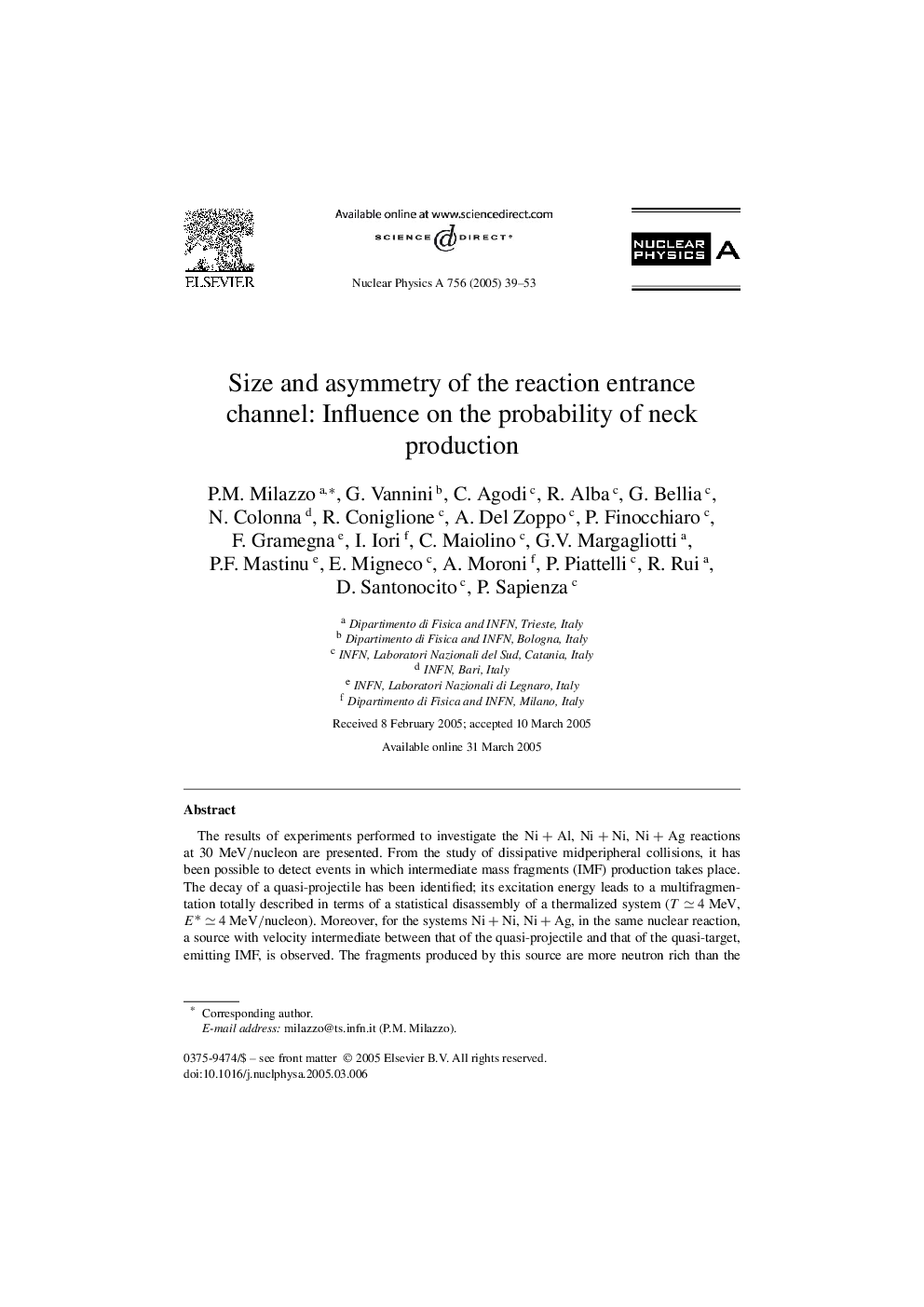| Article ID | Journal | Published Year | Pages | File Type |
|---|---|---|---|---|
| 9851029 | Nuclear Physics A | 2005 | 15 Pages |
Abstract
The results of experiments performed to investigate the Ni + Al, Ni + Ni, Ni + Ag reactions at 30 MeV / nucleon are presented. From the study of dissipative midperipheral collisions, it has been possible to detect events in which intermediate mass fragments (IMF) production takes place. The decay of a quasi-projectile has been identified; its excitation energy leads to a multifragmentation totally described in terms of a statistical disassembly of a thermalized system (Tâ4 MeV, Eââ4 MeV/nucleon). Moreover, for the systems Ni + Ni, Ni + Ag, in the same nuclear reaction, a source with velocity intermediate between that of the quasi-projectile and that of the quasi-target, emitting IMF, is observed. The fragments produced by this source are more neutron rich than the average matter of the overall system, and have a charge distribution different, with respect to those statistically emitted from the quasi-projectile. The above features can be considered as a signature of the dynamical origin of the midvelocity emission. The results of this analysis show that IMF can be produced via different mechanisms simultaneously present within the same collision. Moreover, once fixed the characteristics of the quasi-projectile in the three considered reactions (in size, excitation energy and temperature), one observes that the probability of a partner IMF production via dynamical mechanism has a threshold (not present in the Ni + Al case) and increases with the size of the target nucleus.
Related Topics
Physical Sciences and Engineering
Physics and Astronomy
Nuclear and High Energy Physics
Authors
P.M. Milazzo, G. Vannini, C. Agodi, R. Alba, G. Bellia, N. Colonna, R. Coniglione, A. Del Zoppo, P. Finocchiaro, F. Gramegna, I. Iori, C. Maiolino, G.V. Margagliotti, P.F. Mastinu, E. Migneco, A. Moroni, P. Piattelli, R. Rui, P. Sapienza,
